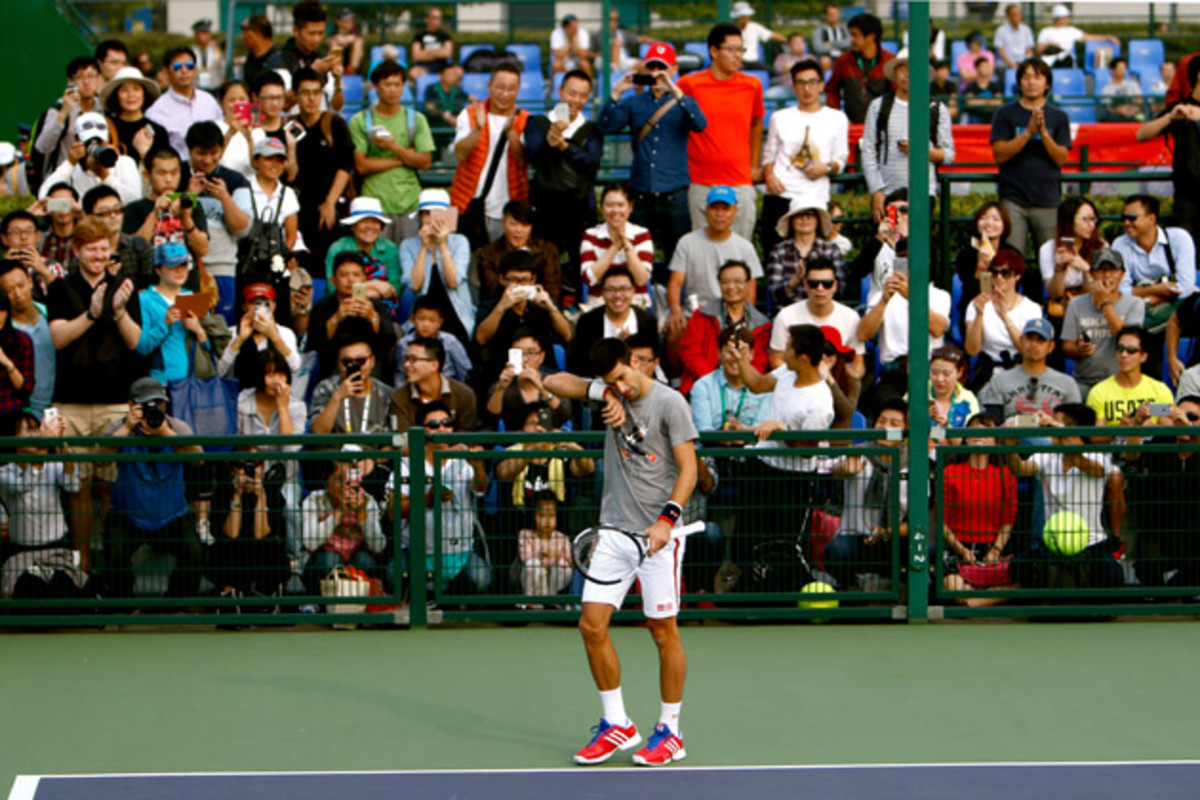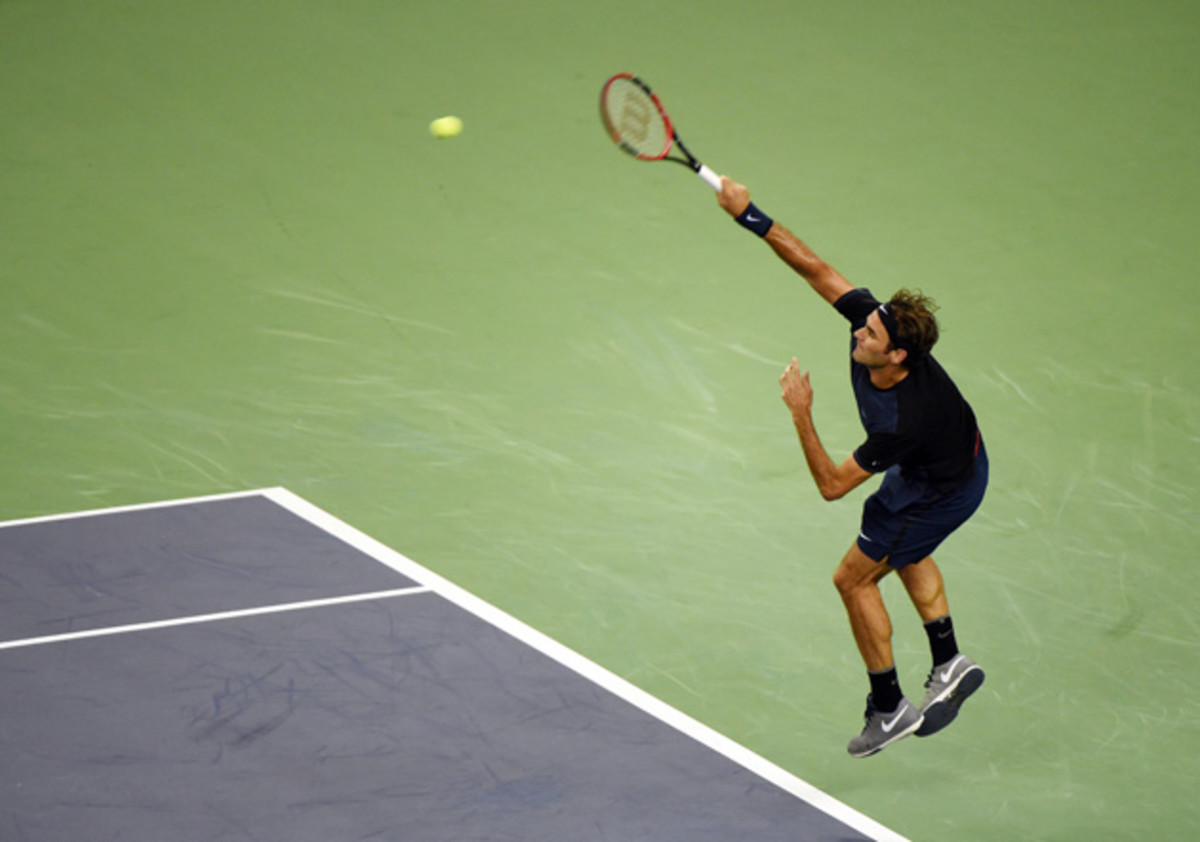Rise of Shanghai Rolex Masters: How China's top ATP tournament was built

Seventeen years ago Charles Smith arrived in Shanghai, China, and found himself in a 3,500-seat tennis stadium built for the China National Games. He, along with a partner and an agreement with the Chinese government, started the Heineken Open, an ATP 250-level tournament.
“We started with modest expectations,” Smith says from Shanghai. “The government liked it.”
The government liked it so much—coupled with the success of the Masters Cup, now the Barclays ATP World Tour Finals, hosted in Shanghai in 2002 and again between 2005 and 2008—that the Chinese committed to build the Qi Zhong Forest Sports City Arena center, which opened in 2005. Fast forward to 2015 and the Shanghai Rolex Masters—an ATP Masters 1000 event held in a retractable-roof stadium court with more than 14,000 seats—is in its sixth year and serves as the main feature of a growing tennis center.

The Qi Zhong tennis center serves as one of the most recognizable sites outside of tennis’ Grand Slam locations with one of the first retractable roofs in the sport. “We had realized very early on that you couldn’t build a stadium that doesn’t have a retractable roof,” Smith says. “Shanghai and China can get different weather and we had had experience with rain.” In fact, the first three years of the initial tournament had the finals pushed back a day due to weather.
While the retractable roof idea is now a popular feature in tennis stadiums around the world, Shanghai took its roof to the next level. The hard court stadium has an eight-piece retractable roof in the shape of a magnolia flower, the symbol of the city. The roof stands as the centerpiece of a trio of stadiums that includes the 14,000-seat center court, a 5,500-seat open-air grandstand court built in 2011 and a third, 1,500-seat stadium. With an additional four match courts, each with between 400 and 800 seats, plus six indoor courts and 12 practice courts, the Qi Zhong center has a total of 25 courts.
Federer upset in opening match at Shanghai Masters
Throughout the center, Smith has imported DecoTurf. While its the same acrylic surface as the U.S. Open, Smith doesn’t believe in the “cushioned” base product used in New York City and instead plays his tournament as a true hard court. There’s been no wavering in the foundation of the court surface, but the tournament has had some fun with the court speed.
“We do it the old-fashioned way,” Smith says about determining the speed. “We play test courts and pick where we want it to be.” Smith transitioned from medium speed to one of the fastest courts on Tour.
“I wanted to see more transition tennis,” he says. “We went very quick and it played very fast.”
Smith has dialed it back from there since the change three years ago. “Like mom’s chicken soup, we make our own thing and salt to taste and do it. Every year is a little different.”
Now, Smith says, the Shanghai event runs medium to medium-fast and stays away from the extreme speeds.

For the players, Smith says the ball used is just as important as the speed of the surface—he calls it the “big wild card” in tournaments. Shanghai uses a highly popular Japanese ball, Srixon, which manufacturers Dunlop and Babolat balls, but is now making balls under its own brand.
“When players hit the ball they want to know what it will do,” Smith says. “Some balls are lighter, but Srixon is a heavier ball with more rubber and more felt. Players like it because they know what they get when they hit it. They feel they can control it.”
The felt on the Srixon contrasts to the hybrid blue-purple color used for in-bounds play in Shanghai, a color scheme—Shanghai Master Green (out of bounds) and Shanghai Purple—developed by DecoTurf just for the Shanghai tournament. “Everybody tweaks it a little, but it is easiest for spectators at home and even in the stadium (to see the ball),” Smith says about his purple.
John Graham, managing director of California Sports Surfaces, the Boston-based parent company of court surface brands, such as DecoTurf, says every tournament wants to have its own color, a way to brand itself, and they offer tournaments the ability to create their own color.
Shanghai is no different in desire for individuality, from its magnolia roof to purple-hued courts. It all just looks a bit different than when Smith arrived 17 years ago.
Tim Newcomb covers stadiums, sneakers and design for Sports Illustrated. Follow him on Twitter at @tdnewcomb.
